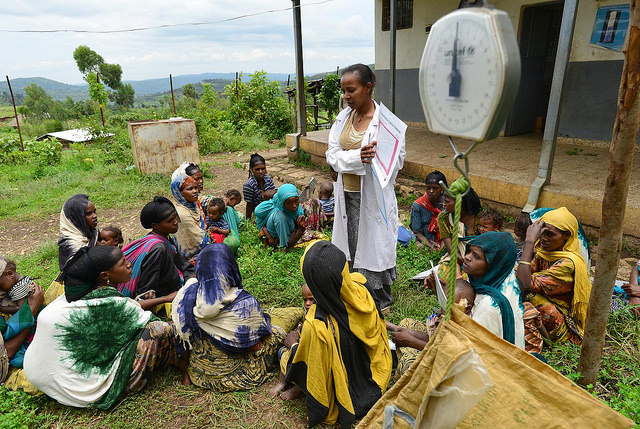How Much Does It Cost to End Malnutrition?
 The United Nations (U.N.) estimates that there are currently 795 million undernourished people in the world. With the help of the global community, it is possible to significantly reduce this number. The necessary steps to addressing food insecurity depend largely on the cost to end malnutrition.
The United Nations (U.N.) estimates that there are currently 795 million undernourished people in the world. With the help of the global community, it is possible to significantly reduce this number. The necessary steps to addressing food insecurity depend largely on the cost to end malnutrition.
Hunger: Not an Issue of Scarcity
When the U.N. implemented the Sustainable Development Goals in 2015, one of the targets was to end hunger and malnutrition across the globe by 2030. While the target seems impossible to achieve, the reality shows that food production is not the problem. Since 2012, the amount of food produced globally has been enough to feed the world’s population. Furthermore, the growth of food production continues to outpace population growth.
Hunger is not caused by food scarcity but by other complex issues such as poverty and inequality. These problems are all linked and an approach to ending malnutrition must address poverty, inequality, climate change and other related issues across the globe.
The Cost to End Malnutrition
The International Institute for Sustainable Development (IISD) has found that the cost to end malnutrition will be an extra $11 billion each year until 2030. This includes an additional $4 billion per year of investments from donor countries, which is a 45 percent increase over current donations. The remaining $7 billion per year will come from the affected countries themselves.
The IISD has created five main categories for which the additional investments will be used for. The categories are as follows:
- Social Safety Nets – such as food stamps and other government programs.
- Farm Support – including subsidies for seeds, tractors and other costs necessary to produce food.
- Rural Development – working to improve infrastructure and market access.
- Enabling Policies – passing government policies that will help those suffering from malnutrition.
- Nutrition – addressing concerns such as stunting, wasting and anemia.
It will take a combination of all five of these categories to meet the United Nation’s goal of eradicating hunger and malnutrition by 2030. While the estimated cost of $11 billion a year in additional funds is a tall order, it can be accomplished with a coordinated global effort.
Eradicating malnutrition goes hand in hand with ending poverty and creating a more equitable world. There is an opportunity to put an end to the injustices faced by many around the world. However, in order for that to happen, countries around the world must understand the cost to end malnutrition and make this cause a higher priority.
– Aaron Childree
Photo: Flickr
